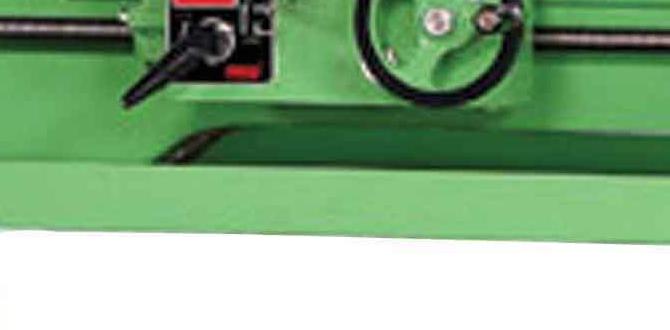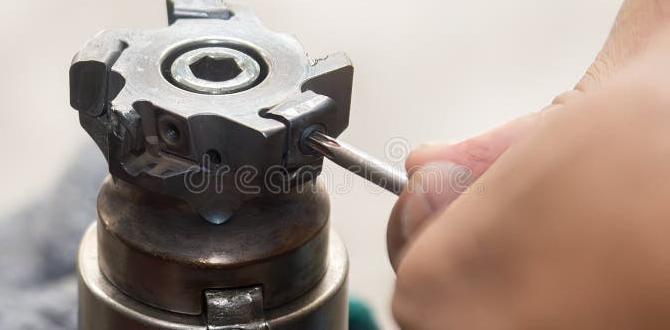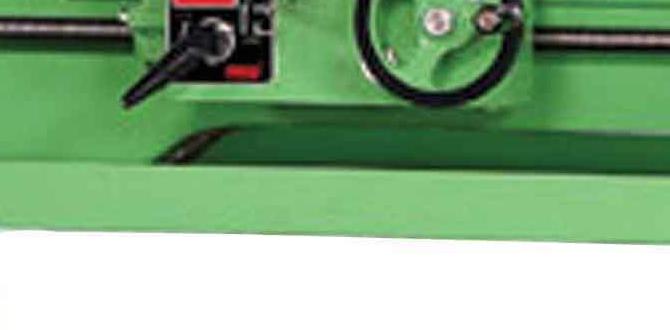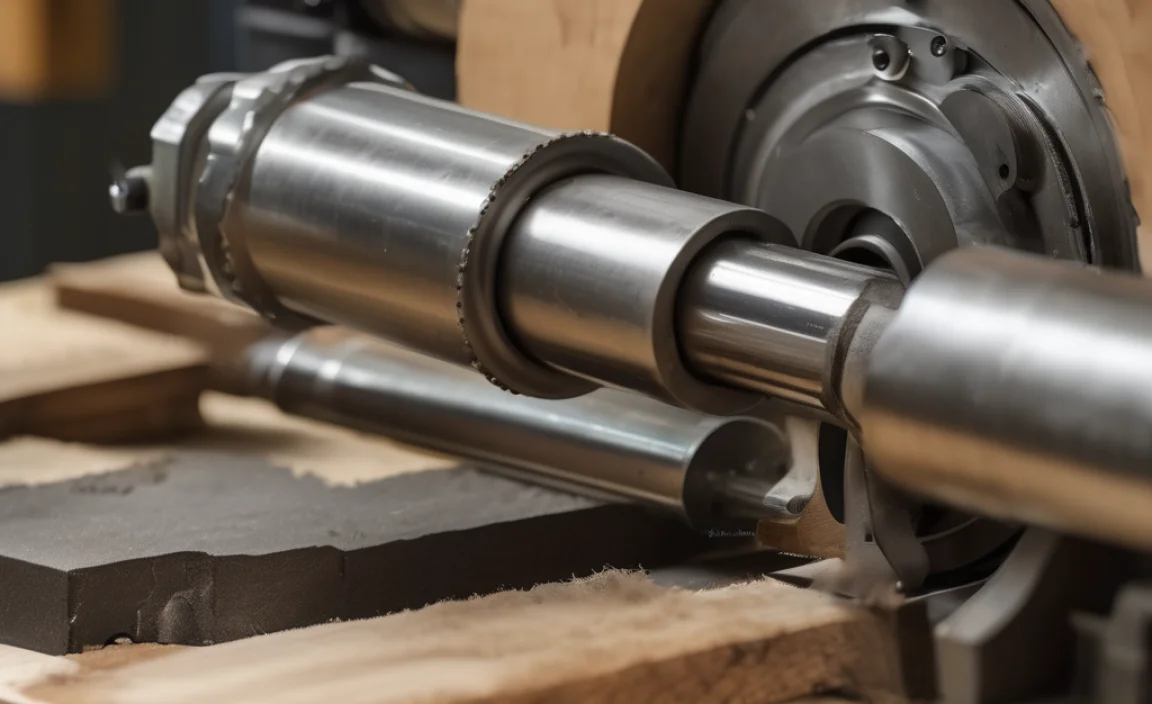Lathe Projects for Beginners: Proven Essential Ideas
Looking for simple lathe projects to build your skills? Start with essential wooden items like bowls, pens, and spindles. These projects use basic techniques, require minimal tools, and offer quick, satisfying results, building confidence for more complex work.
Welcome to Lathe Hub! If you’re new to the wonderful world of lathes, you might be feeling a little overwhelmed. Seeing experienced woodturners create amazing pieces can be inspiring, but also a bit daunting when you’re just starting out. The good news is that every expert began as a beginner. With the right projects and a little guidance, you can quickly get the hang of it and start making your own impressive creations. We’ll guide you through some fantastic beginner lathe projects that are not only achievable but will also teach you fundamental turning skills. Get ready to discover the joy of transforming raw material into finished pieces!
—
Why Start with Simple Lathe Projects?
Starting your lathe journey with straightforward projects is crucial for building a solid foundation. It’s like learning to walk before you run. These initial projects are designed to help you master the basics of lathe operation, tool control, and finishing techniques without the frustration of overly complex steps.
Think about it: your first few turns on the lathe are about getting comfortable with the machine, understanding how the tools interact with the wood, and learning to make smooth, controlled cuts. Attempting something too ambitious too soon can lead to mistakes, wasted material, and a sense of discouragement. Simple projects, on the other hand, offer frequent successes. Each finished piece, no matter how basic, provides a tangible reward and reinforces the skills you’re developing. This confidence boost is invaluable as you progress.
Additionally, beginner projects often require fewer specialized tools and less material, making them more accessible for those just setting up their workshop. You can focus on learning the core techniques with essential tools before investing in a broader range of equipment.
Essential Tools for Beginner Lathe Projects
Before you dive into your first project, ensuring you have the right tools is key to a safe and enjoyable experience. While a lathe is the star of the show, a few essential accessories will make your turning journey much smoother. Don’t worry, you don’t need a workshop full of gadgets to start!
Here’s a rundown of the must-have tools for any beginner embarking on lathe projects:
- Lathe: The centerpiece! For beginners, a benchtop woodturning lathe is often ideal. Look for one with variable speed control, which is incredibly helpful for different types of cuts and wood.
- Chucks: These hold your workpiece securely on the lathe. For beginners, a basic scroll chuck with a 2-jaw set is a great starting point. This allows you to grip both inside and outside of your workpiece.
- Woodturning Chisels/Gouges: You’ll need a few basic tools to shape the wood. A good starter set might include:
- Spindle Gouge: Excellent for general shaping and creating curves.
- Roughing Gouge: Used for quickly removing material and rounding over square stock.
- Scraper: Useful for smoothing surfaces and creating flat areas.
- Skew Chisel: Versatile for cutting, shearing, and smoothing.
- Measuring Tools: A tape measure, ruler, and calipers (digital or dial) are essential for checking dimensions.
- Sanding Supplies: Sandpaper in various grits (from coarse like 80 to fine like 400) is a must for achieving a smooth finish.
- Safety Gear: This is non-negotiable! Always use:
- Safety Glasses or Face Shield: To protect your eyes from flying dust and debris.
- Dust Mask or Respirator: Wood dust can be harmful.
- Hearing Protection: Lathes can be noisy.
- Appropriate Clothing: Avoid loose sleeves, jewelry, or anything that could get caught.
- Bench Brush: For cleaning up chips and dust.
- Center Finder: Helps you accurately locate the center of your workpiece.
For an in-depth look at selecting your first lathe, you might find resources from organizations like Woodworker’s Journal to be very helpful. They offer practical advice tailored to different needs and budgets.
Proven Lathe Projects for Beginners
Now for the fun part! These projects are carefully selected to introduce you to essential turning techniques. They’re designed to be achievable, rewarding, and build your confidence with each successful piece.
1. Spindles and Table Legs
One of the most fundamental shapes you’ll learn to turn is a simple spindle. This is the basis for many other projects, including table legs, chair components, and decorative elements.
What you’ll learn: Rounding stock, parallel turning, tapering, basic beads and coves.
Materials: Typically softwoods like pine or poplar, or hardwoods like maple or oak. Start with dry, stable wood.
Steps:
1. Select and Prepare Stock: Choose a square, kiln-dried piece of wood slightly longer and thicker than your desired finished spindle.
2. Mount the Stock: Secure the wood between centers on your lathe. Use a live center at the tailstock end to allow rotation.
3. Round the Stock: Using a roughing gouge, carefully turn the square blank into a cylinder. Go slow and make controlled cuts.
4. Shape the Spindle: With a spindle gouge, begin to shape the cylinder. Practice creating parallel sections, gentle tapers, and simple decorative elements like beads (a convex curve) and coves (a concave curve).
5. Sand and Finish: Once shaped, sand the spindle progressively through grits of sandpaper while the lathe is running at a slow speed. Apply your finish of choice (e.g., Danish oil, lacquer).
6. Part Off: Use a parting tool to cut the spindle free from the waste block.
This project is excellent for practicing tool control and understanding how different gouges interact with the wood.
2. Simple Wooden Bowls
Turning a bowl is a classic introduction to hollowing techniques. Beginners should start with shallower, wider bowls rather than deep, narrow ones.
What you’ll learn: Faceplate turning, hollowing, rim turning, bottom chucking.
Materials: Flat, round blanks are ideal. Can be solid wood or laminated pieces. Hardwoods like maple, cherry, or walnut.
Steps:
1. Prepare Blank: Cut a blank to your desired diameter and thickness. If it’s not perfectly round, you’ll need to trim it.
2. Mount the Blank (Faceplate): Attach a faceplate to one side of your blank. Then, thread the faceplate onto the lathe’s spindle. It’s often best to leave a portion of the blank square for easier initial shaping and to create a drive tenon.
3. Shape the Outside: Using your gouges, shape the exterior of the bowl. Practice creating a smooth curve.
4. Hollow the Bowl: Flip the bowl around. Mount it in a chuck using a jam chuck or by creating a tenon on the bottom for the chuck jaws. Carefully begin hollowing out the inside with a bowl gouge. Work in stages, removing only small amounts of material at a time.
5. Refine the Rim and Base: Shape the rim and the base of the bowl.
6. Sand and Finish: Sand the interior and exterior surfaces. For bowls, it’s common to sand directly on the lathe. Apply a food-safe finish if intended for kitchen use.
7. Remove from Faceplate: Carefully remove the faceplate, which will leave a hole. This can be filled, or you can turn the bowl to be used with the faceplate side down as a decorative piece.
A good resource for understanding bowl turning basics can be found on sites like Popular Woodworking, which often has in-depth articles with diagrams.
3. Wooden Pens
This is a very popular and rewarding project for beginners, and it’s a great way to use smaller scraps of wood. Pen kits require minimal turning skills but demand precision.
What you’ll learn: Turning thin sections, using a pen mandrel, drilling accurately, gluing.
Materials: Pen kits (available online or at woodworking stores), wood blanks (bamboo, various hardwoods, acrylics), blanks for the barrel. A drill press is highly recommended for accuracy.
Steps:
1. Drill the Blanks: For wooden blanks, you first need to drill a straight hole through the center. This is best done with a drill press and a bit the size specified by your pen kit.
2. Prepare for Turning: Insert the brass tubes from the kit into the drilled holes. Glue them securely using wood glue or CA (super) glue. Let them dry completely.
3. Mount on Mandrel: Once the glue is dry, trim the wood flush with the ends of the brass tubes. Then, mount the wood-sheathed tubes onto a pen mandrel. The mandrel is a specialized rod that fits onto your lathe.
4. Turn the Wood: Using a sharp spindle gouge, turn the wood down to the diameter of the brass tube. For a classic pen, you’ll often turn two sections – one for the upper part and one for the lower. Be careful not to turn into the brass tube!
5. Sand and Finish: Sand the turned sections smooth using progressively finer grits of sandpaper. Then apply a finish like CA glue, lacquer, or wax.
6. Assemble the Pen: Once finished, press the pen kit components (nib, clip, tip, mechanism) into the turned and finished wood parts.
Wood Magazine often features articles on pen turning and different types of kits.
4. Small Lidded Boxes
Creating a lidded box introduces you to turning accurately to fit two parts together and adding decorative elements.
What you’ll learn: Precision turning, fitting lids, creating tenons and recesses, threading (optional).
Materials: Hardwoods work best for strength and appearance.
Steps:
1. Prepare the Blanks: Cut two blanks – one for the body and one for the lid. Ensure they are the same diameter and slightly longer than needed.
2. Turn the Body: Mount the body blank. Turn the outside shape. Then, create a recess on the top where the lid will fit. This often involves turning a tenon on the lid blank that will seat into this recess.
3. Turn the Lid: Mount the lid blank. Turn the outside to match the body. Create a tenon on the bottom of the lid that will fit snugly into the recess on the body.
4. Shape the Inside (Optional): You can hollow out the inside of the body to create storage space.
5. Achieve a Fit: The critical step is ensuring the lid fits securely onto the body. This might require precise adjustments to the tenon and recess.
6. Sand and Finish: Sand both parts separately and then together for a seamless look. Apply your chosen finish.
7. Assembly: Carefully fit the lid onto the body.
5. Simple Candlestick Holders
Candlestick holders are excellent for practicing turning tapers and creating a stable base.
What you’ll learn: Turning tapers, creating a stable base, drilling a hole for a candle.
Materials: Straight-grained wood is good. Pine, oak, or maple are suitable.
Steps:
1. Prepare Stock: Cut a blank to the desired height and diameter.
2. Mount and Rough Shape: Mount the blank between centers. Use a roughing gouge to create a basic cylindrical shape.
3. Turn Tapers: Use a spindle gouge to carefully create an upward taper. You can add decorative beads or coves as you refine the shape.
4. Create the Base: Ensure the bottom is flat and stable. If turning from a solid blank, you may need to part off a section to create a solid base or turn it to fit into a chuck for hollowing.
5. Create Candle Socket: Drill a hole on the top of the candlestick where the candle will sit. A drill bit the size of a standard candle is appropriate. You can also turn a slight recess.
6. Sand and Finish: Sand the entire piece smooth and apply a finish.
Key Skills Developed Through These Projects
Each of these beginner projects is designed to help you develop fundamental turning skills. Mastering these will set you up for success with more advanced work.
Basic Lathe Operation and Safety
Simply setting up your workpiece, operating the speed controls, and learning how the tool rest works are crucial. Most importantly, you’ll develop a keen sense of safety, always ensuring your workpiece is secure, your tools are sharp, and you’re wearing your protective gear.
Tool Control and Sharpening
Learning to hold and control your gouges and chisels is paramount. You’ll discover how different parts of the tool (like the flute or the bevel) affect the cut. Understanding when and how to sharpen your tools is also a vital skill. Sharp tools make clean cuts and are safer to use. For tips on keeping your tools sharp, check out guides on tool grinding – a well-maintained edge is critical.
Understanding Wood Grain
As you turn, you’ll quickly learn how the direction of the wood grain affects your cuts. You’ll see how “climbing” cuts (where the tool catches the grain and digs in) can happen if you’re not careful, especially on end grain or figured wood. Basic projects help you learn to manage and work with the grain.
Hollowing Techniques
Projects like bowls and boxes introduce you to the art of hollowing. This involves carefully removing material from the inside of a spinning piece. You’ll learn to control the depth and shape of the hollow.
Finishing Techniques
Achieving a smooth, beautiful finish is what makes a turned piece truly shine. You’ll practice sanding on the lathe at different speeds and learn how to apply various finishes like oils, waxes, or lacquers.
Safety First: Always Remember Your PPE
I can’t stress this enough – safety is the absolute top priority when working with a lathe. Lathes spin at high speeds, and wood can break or splinter unexpectedly. Always wear your Personal Protective Equipment (PPE).
Eye Protection: A good pair of safety glasses or, even better, a full face shield is essential.
Dust Mask/Respirator: Wood dust is not good for your lungs.
Hearing Protection: Lathes can be quite loud.
No Loose Clothing: Tuck in your shirt, remove jewelry, tie back long hair. Anything that could get caught is a danger.
Stand to the Side: Never stand directly in line with the spinning workpiece.
Secure Workpiece: Always ensure your wood is firmly secured on the lathe. Check it regularly.
Sharp Tools: Dull tools are more dangerous as they require more force and can catch.
The Occupational Safety and Health Administration (OSHA) provides extensive guidelines on machine safety, which are applicable to woodworking tools like lathes. Understanding these principles is fundamental for any workshop. You can find general woodworking safety guidelines on the OSHA website.
Common Beginner Pitfalls and How to Avoid Them
Even with the best intentions, beginners often encounter similar challenges. Being aware of these can help you steer clear of them.
Pitfall 1: Using Dull Tools
The Problem: Dull tools require more force, lead to ragged cuts, tear-out, and can catch unexpectedly, causing dangerous jags.
The Solution: Invest in a sharpening system (grinding wheel, sharpening stones, or diamond plates) and learn how to maintain a sharp edge. Many beginner tools benefit greatly from sharpening straight out of the box, as factory edges can sometimes be less than ideal.
Pitfall 2: Rushing the Process
The Problem: Trying to remove too much material too quickly, or skipping sanding steps. This often results in torn grain, gouges, and a poor finish.
The Solution: Be patient. Make light, controlled cuts. Progress through your sandpaper grits systematically. The lathe is a place for focused, deliberate work.
Pitfall 3: Incorrect Tool Rest Placement
The Problem: The tool rest being too far from the workpiece allows the tool to catch and dig in, leading to dangerous kickbacks.
The Solution: Always position the tool rest as close as safely possible to the workpiece without interfering with rotation (typically 1/8″ to 1/4″ away). Chamfered tool rests add an extra layer of safety.
Pitfall 4: Not Securing the Workpiece Properly
The Problem: Wood that isn’t properly mounted can shift, vibrate excessively, or even be ejected from the lathe.
The Solution: Double-check your mounting method (between centers, in a chuck, on a faceplate). For new setups, start at a very slow speed to ensure everything is secure before increasing RPMs.







